Does your baby or toddler like to put everything in their mouth? This chia seed sensory play activity is fun, easy to prepare and totally edible—making it perfect for both younger and older kids!
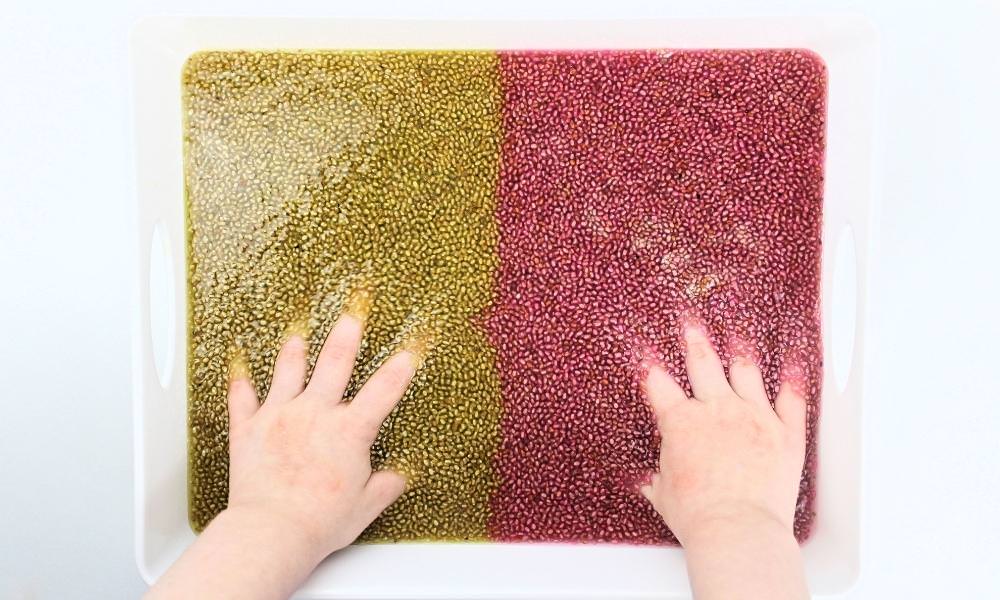
This post may contain affiliate links, which means I may receive a commission, at no extra cost to you, if you make a purchase through a link. As an Amazon Associate, I earn from qualifying purchases. Please see my full disclosure for further information.
JUMP TO…
Whether you’re adding cornstarch to make chia seed slime or freezing them to create a totally new sensory experience for your kids, there are SO many fun ways to use chia seeds for sensory play.
And while they are not meant to be eaten as a snack, chia seeds are fully edible. This makes chia seed sensory play perfect for infants and younger toddlers who still like to put everything in their mouths.
This chia seed and water sensory bin is super easy to make, and it kept our kids entertained for hours. This easy taste-safe activity is perfect for parents who are looking for a safe way to let their little ones explore new textures!
(P.S. If you’re looking for more taste-safe sensory activities, check out this list of 25 Taste-Safe Sensory Play Ideas for kids!)
GRAB OUR 12 BEST SENSORY RECIPES!
Subscribe to our email newsletter to receive 12 of our most popular sensory recipes in PDF format as a welcome gift:
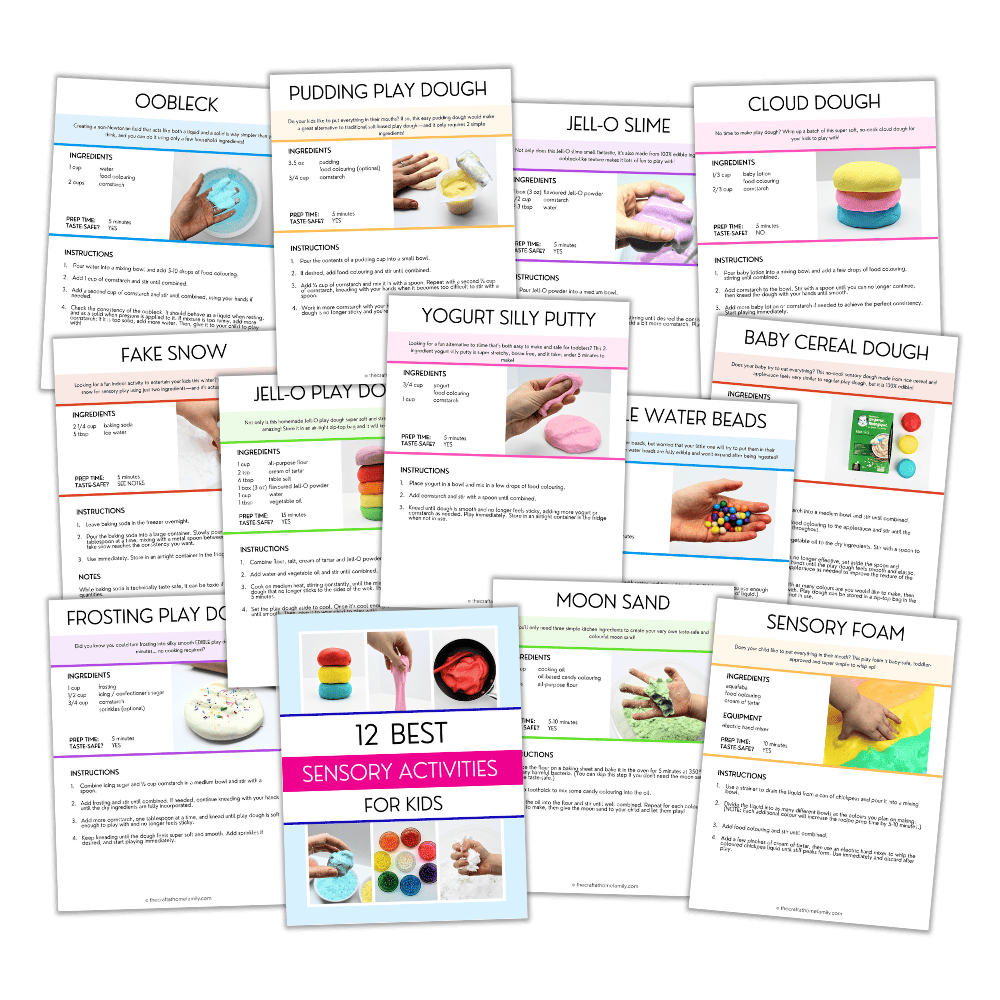
Already a subscriber? Don’t worry, you won’t be subscribed twice. By submitting your email address, you are agreeing to the terms of our Privacy Policy. You can unsubscribe at any time.
Required Ingredients
Here’s what you’ll need to make this colourful taste-safe sensory activity with chia seeds and food colouring:
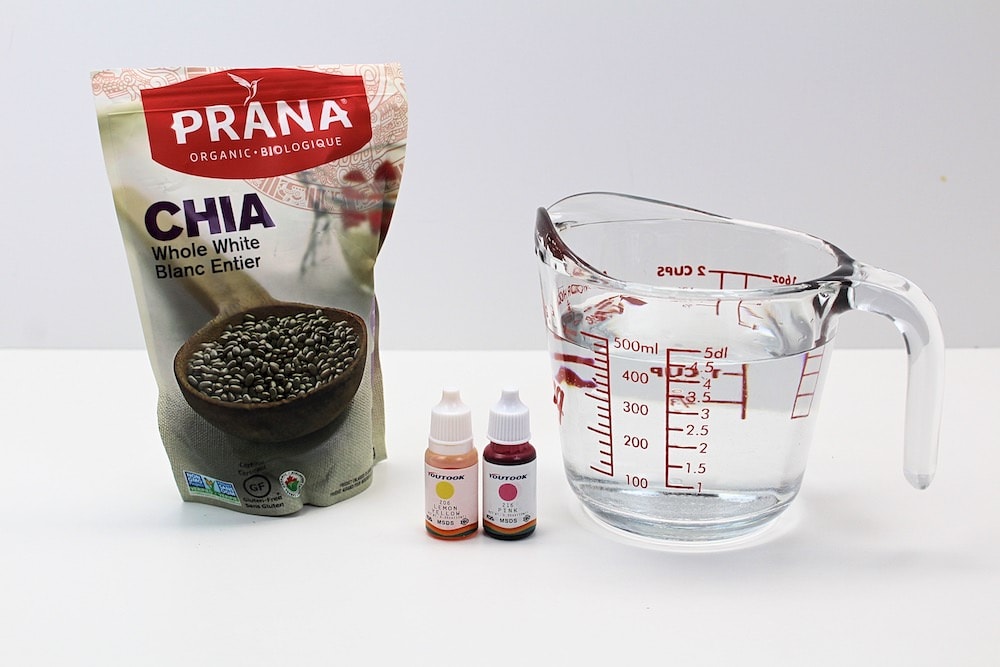
- White chia seeds (whole, not ground)
- Water
- Food colouring
Note: This recipe also works with black chia seeds, but because they’re darker in colour, the final colour won’t be as vibrant. We wanted bright colours, so we chose to use white chia seeds. But if you’re trying to make a fake pond with chia seed “frog spawn” or a creepy Halloween sensory bin, black chia seeds would work perfectly!
How to Make a Chia Seed Sensory Bin (Step-by-Step)
1. Measure Chia Seeds
Start by measuring out ¼ cup of chia seeds and pouring them into a small- to medium-sized container. (Make sure that particular container has a lid so you can cover the chia seeds while they’re soaking up the water.)
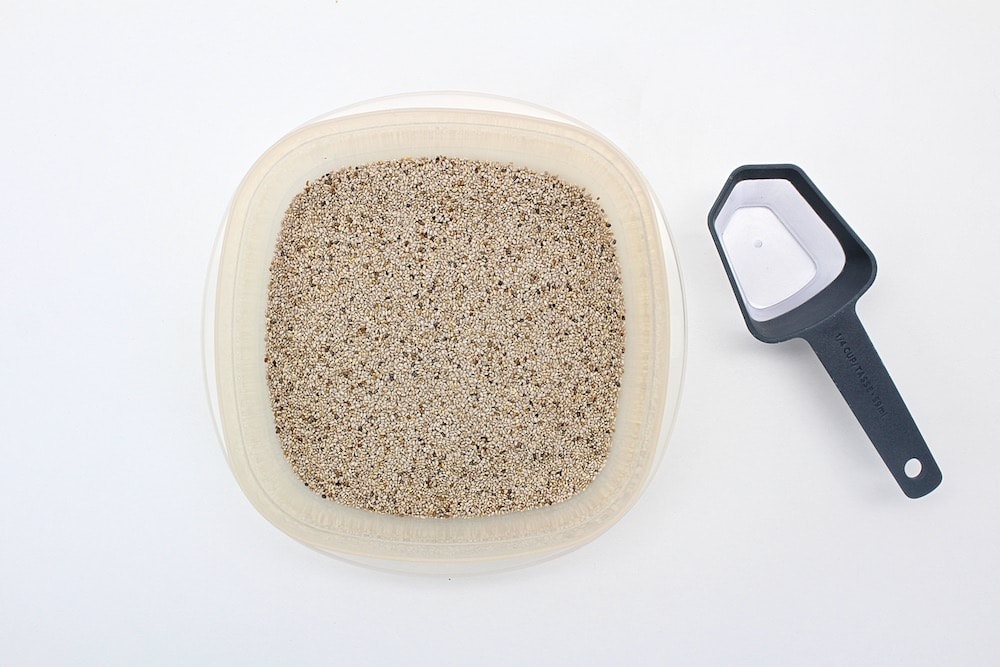
2. Add Water
Add 1 ¾ cups of water and stir with a spoon until combined. The chia seeds will likely float up to the top.
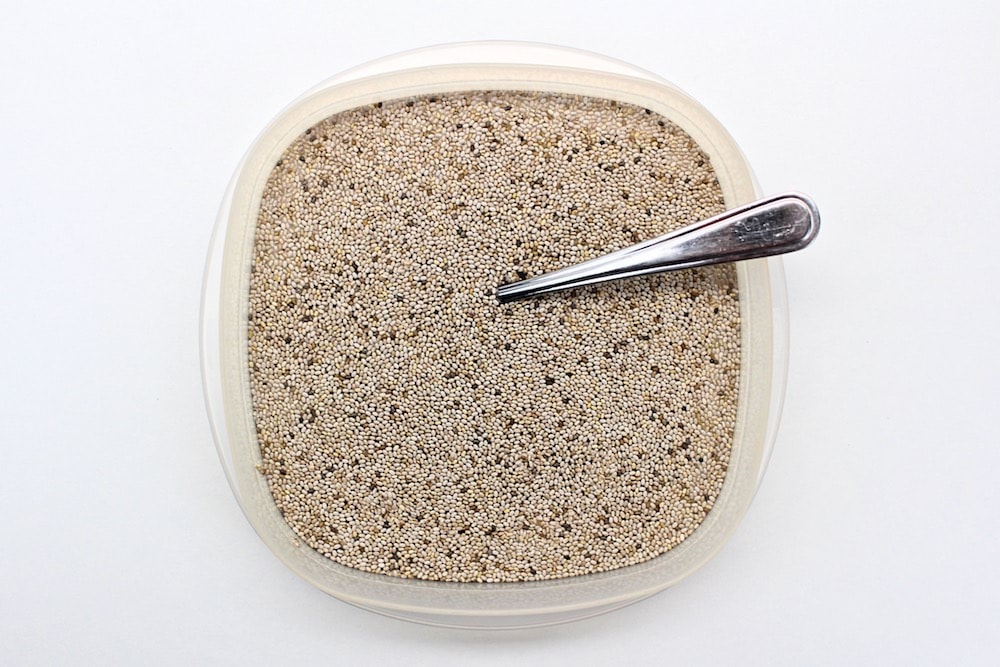
3. Add Food Colouring
Add a few drops of food colouring and stir with a spoon until the colour is visible throughout. We used 6 drops of liquid food colouring and ended up with pretty bright colours, but feel free to add as few or as many as you like.
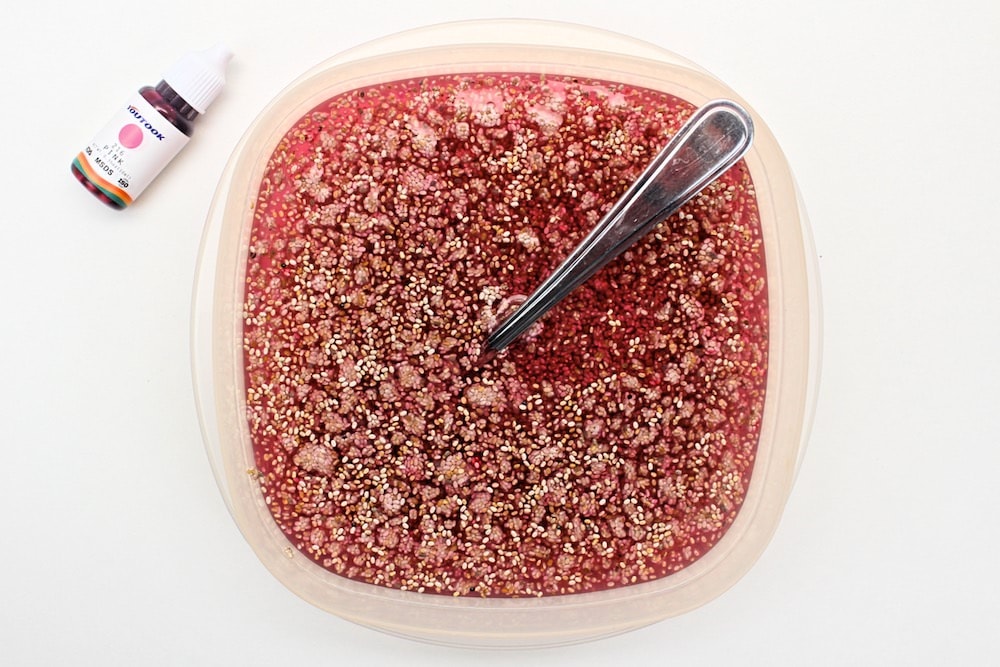
4. Prepare More Colours (Optional)
If you’re planning on making several colours of taste-safe chia seed goop, now is the time! Simply repeat the previous steps as many times as you like in separate containers. (I love that our containers are stackable because they take up less room in the fridge.)
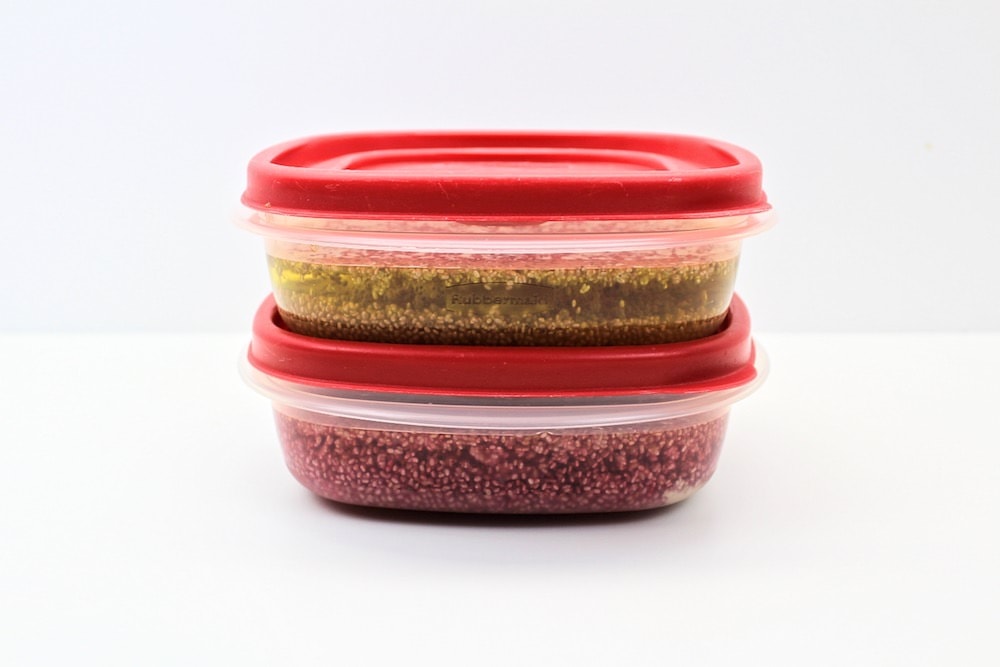
We chose to use pink and yellow, but you can make an entire chia seed rainbow if you like—especially if a lot of kids will be playing with.
5. Let Soak
Close the containers and place them in the fridge for 3-4 hours (or overnight) to allow the chia seeds to fully absorb the water. This will cause them to “gel” and develop a slimy texture that is perfect for messy sensory play!
Once the chia seeds are done soaking up the liquid, it’s ready to play with. Simply place the edible chia seed mixture into a bin or sensory tray, pouring each colour into its own section, and let your kids play with it. (Make sure you protect your play area as this is a pretty messy activity—keep reading for some tips on how to limit the mess!)
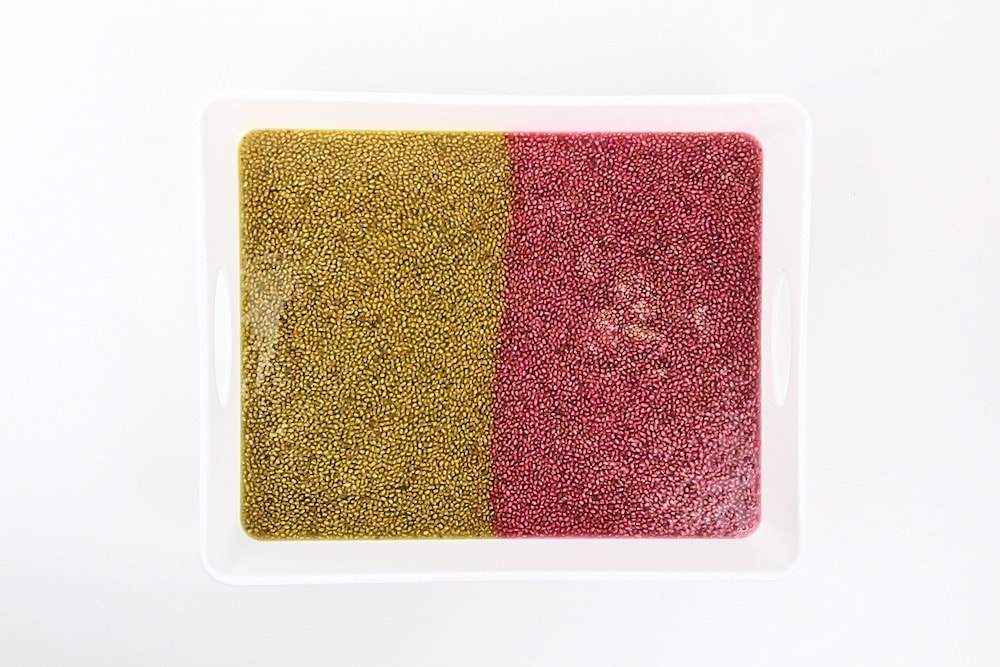
Our kids had a BLAST with this activity. They did find it a bit cold to the touch, but then I did take it straight out of the fridge, so if your little ones aren’t fans of cold sensory materials, you may want to leave it out on the counter for a bit before play time so it has a chance to warm up.
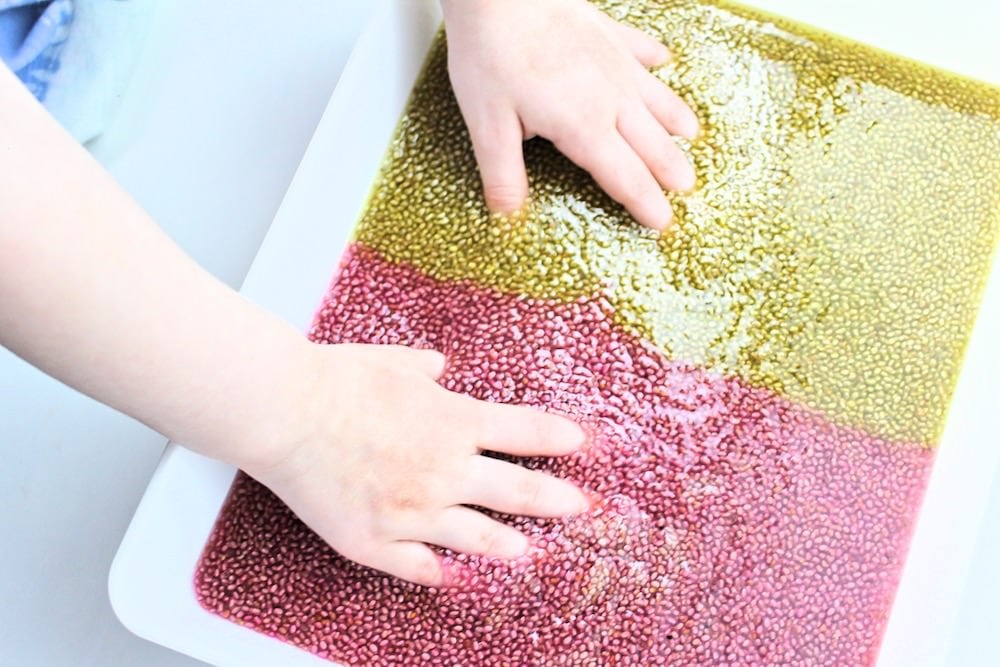
Surprisingly enough, the mixture didn’t really feel sticky to the touch and it sort of glided off our fingers.
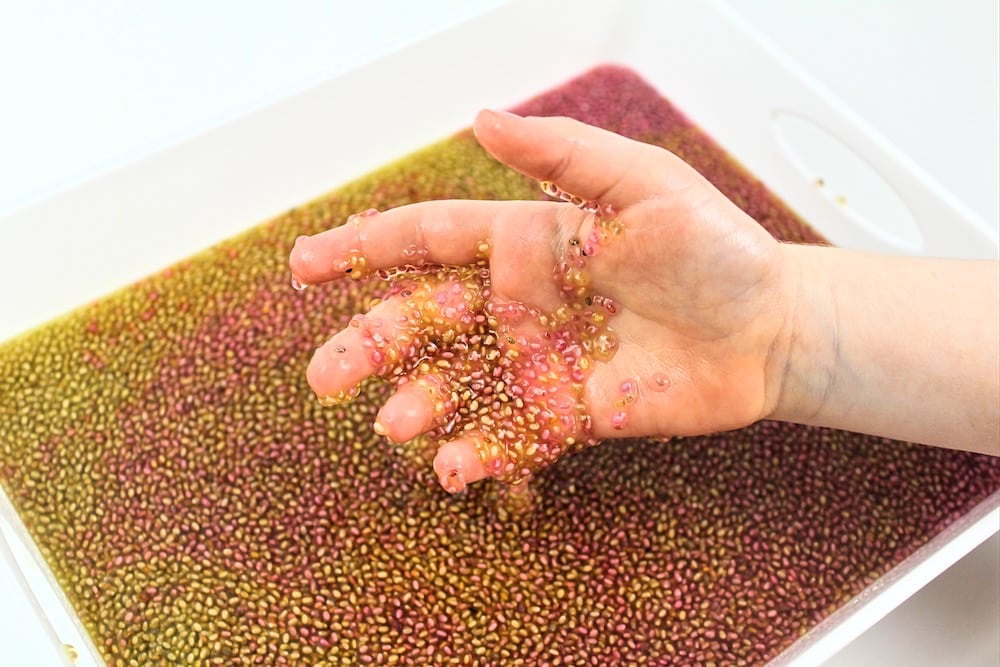
We also thought it was pretty cool how the colours didn’t immediately mix when our kids swirled around with their hands—though they did eventually mix because our kids played with this for a LONG time.
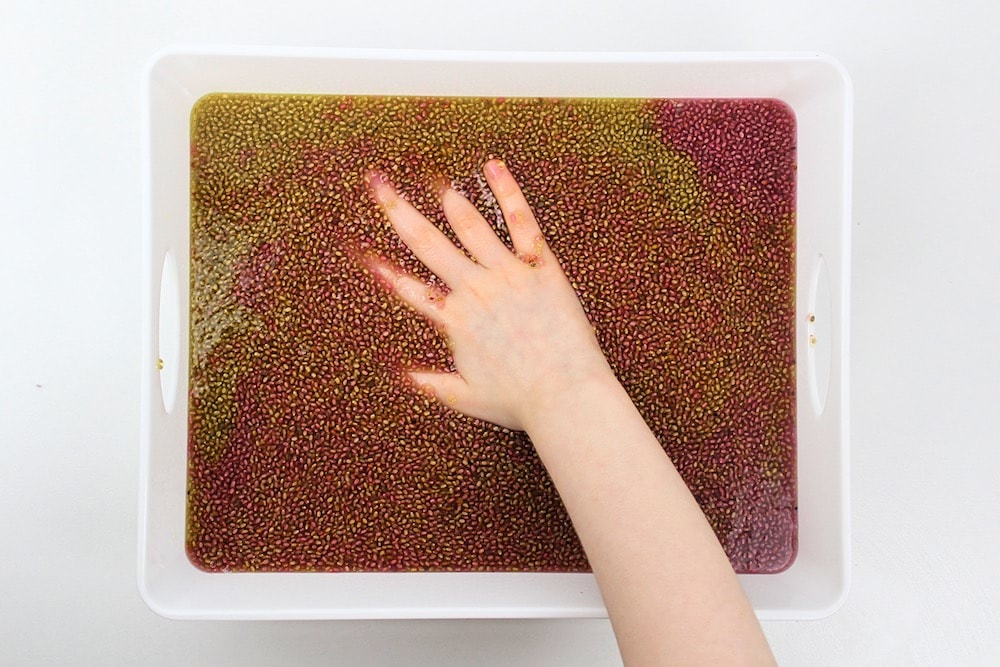
My four-year-old, in particular, couldn’t get enough of this activity. She even liked the way it tasted, though I’m not quite sure why as plain chia seeds don’t really taste like much.
But it did keep her engaged for several hours though, so no complaints here! She loved scooping and pouring the chia seed mixture over and over. (This chia slime was also a huge hit.)
How to Limit the Mess
Fair warning—if your kids are anything like mine, this activity will get messy. Here are some tips to help limit the mess:
- If playing at the table, make sure to cover the table with a plastic tablecloth (we keep our table covered at all times for easier cleanup)
- If you don’t have a plastic tablecloth, consider setting up this activity on a plastic tarp on the floor
- Avoid doing this activity over an area that has carpeted or hardwood floors
- Remove your child’s clothing or make them wear a smock while they play with the chia goop
- Braid or gather long hair into a ponytail before your kids start playing, and be prepared to give them a bath when they’re done playing
- Weather permitting, take this activity outdoors (leftover chia seeds will decompose on your lawn and are not harmful to wildlife)
Some amount of mess is unavoidable, but I hope these tips help make things a bit easier for you!
Is This Activity Safe to Eat?
While this taste-safe goo is perfectly safe for kids to taste, chia seeds can cause constipation, diarrhea, bloating or gas when consumed in large quantities. For this reason, you should treat this activity as “taste-safe” rather than edible.
Also, make sure that you give the chia seeds enough time to soak. Chia seeds can cause blockages in the oesophagus when consumed dry, so you’ll want to make sure they have properly soaked up the water before you let your kids play with them.
But as long as you let the chia seeds fully absorb the water and make sure that they don’t eat too much of the chia goop, this activity is perfect for young kids who still have a tendency to put everything in their mouths!
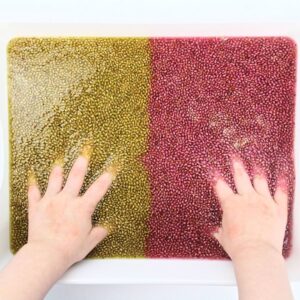
Chia Seed Sensory Bin
Ingredients
- ¼ cup white chia seeds whole
- 1 ¾ cups water
- food colouring as needed
Instructions
- Pour chia seeds into a bowl or container.
- Add water and mix with a spoon.
- Add a few drops of food colouring and mix some more, until the colour is visible throughout.
- Cover the bowl or container and place it in the fridge. Let the chia seeds soak for 3-4 hours, until they develop a thick, slimy texture. Then, give the mixture to your child to play with!
Notes
Related Taste-Safe Sensory Activities
Looking for more taste-safe sensory activities for your baby or toddler? Check out these articles:
- Taste-Safe Gelatin Cubes
- Edible Yogurt Silly Putty
- 3-Ingredient Frosting Play Dough
- Taste-Safe Sensory Foam
- Edible Tapioca Water Beads
Join my mailing list using the form below to receive 12 of the most popular sensory recipes on my site in PDF format! You’ll be the first to know when I publish new recipes, and you’ll also gain access to my free printables library, which is filled with lots of printable activities for kids.
GRAB OUR 12 BEST SENSORY RECIPES!
Subscribe to our email newsletter to receive 12 of our most popular sensory recipes in PDF format as a welcome gift:

Already a subscriber? Don’t worry, you won’t be subscribed twice. By submitting your email address, you are agreeing to the terms of our Privacy Policy. You can unsubscribe at any time.
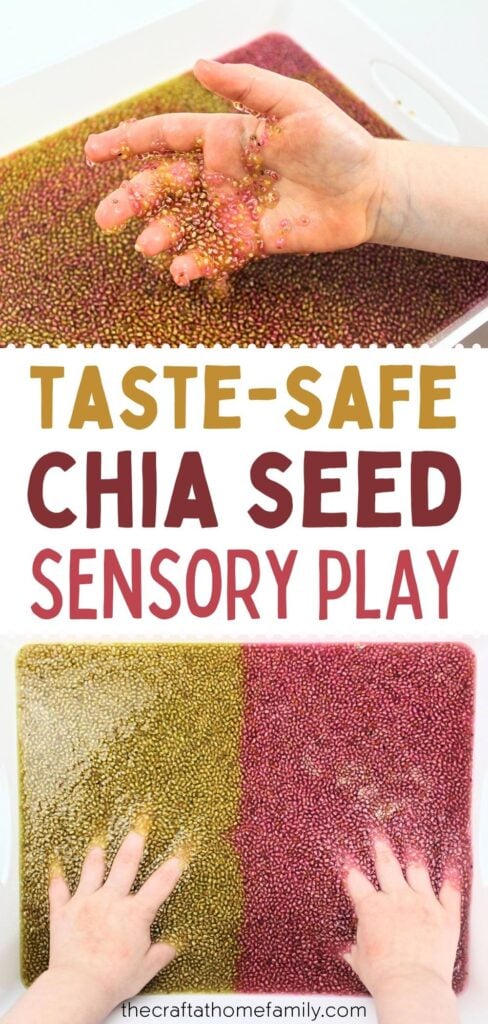
HI, just wondering how longs this lasts? One play and throw it out? Or but it back in the fridge and they can play for a few days consecutively? thanks
As long as your kids have clean hands while they’re playing with it and the ambient temperature isn’t excessively warm, you can probably get away with putting whatever is left back into the fridge and playing with it for a few days! Just make sure to check it for signs of spoilage before you let them play with it again and discard it if you notice anything off (smell, texture, etc.).